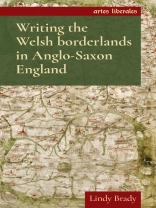This is the first study of the Anglo-Welsh border region in the period before the Norman arrival in England, from the fifth to the twelfth centuries. Its conclusions significantly alter our current picture of Anglo/Welsh relations before the Norman Conquest by overturning the longstanding critical belief that relations between these two peoples during this period were predominately contentious.
Writing the Welsh borderlands in Anglo-Saxon England demonstrates that the region which would later become the March of Wales was not a military frontier in Anglo-Saxon England, but a distinctively mixed Anglo-Welsh cultural zone which was depicted as a singular place in contemporary Welsh and Anglo-Saxon texts. This study reveals that the region of the Welsh borderlands was much more culturally coherent, and the impact of the Norman Conquest on it much greater, than has been previously realised.
Table des matières
Introduction: the Dunsæte Agreement and daily life in the Welsh borderlands
1 Penda of Mercia and the Welsh borderlands in Bede’s Historia Ecclesiastica
2 The Welsh borderlands in the Lives of St. Guthlac
3 The ‘dark Welsh’ as slaves and slave raiders in Exeter Book riddles 52 and 72
4 The Welsh borderlands in the Anglo-Saxon Chronicle
5 The transformation of the borderlands outlaw in the eleventh century
Conclusion: Harold Godwinson, the last Anglo-Saxon in the Welsh borderlands
Index
A propos de l’auteur
Lindy Brady is Assistant Professor in the Department of English at the University of Mississippi












